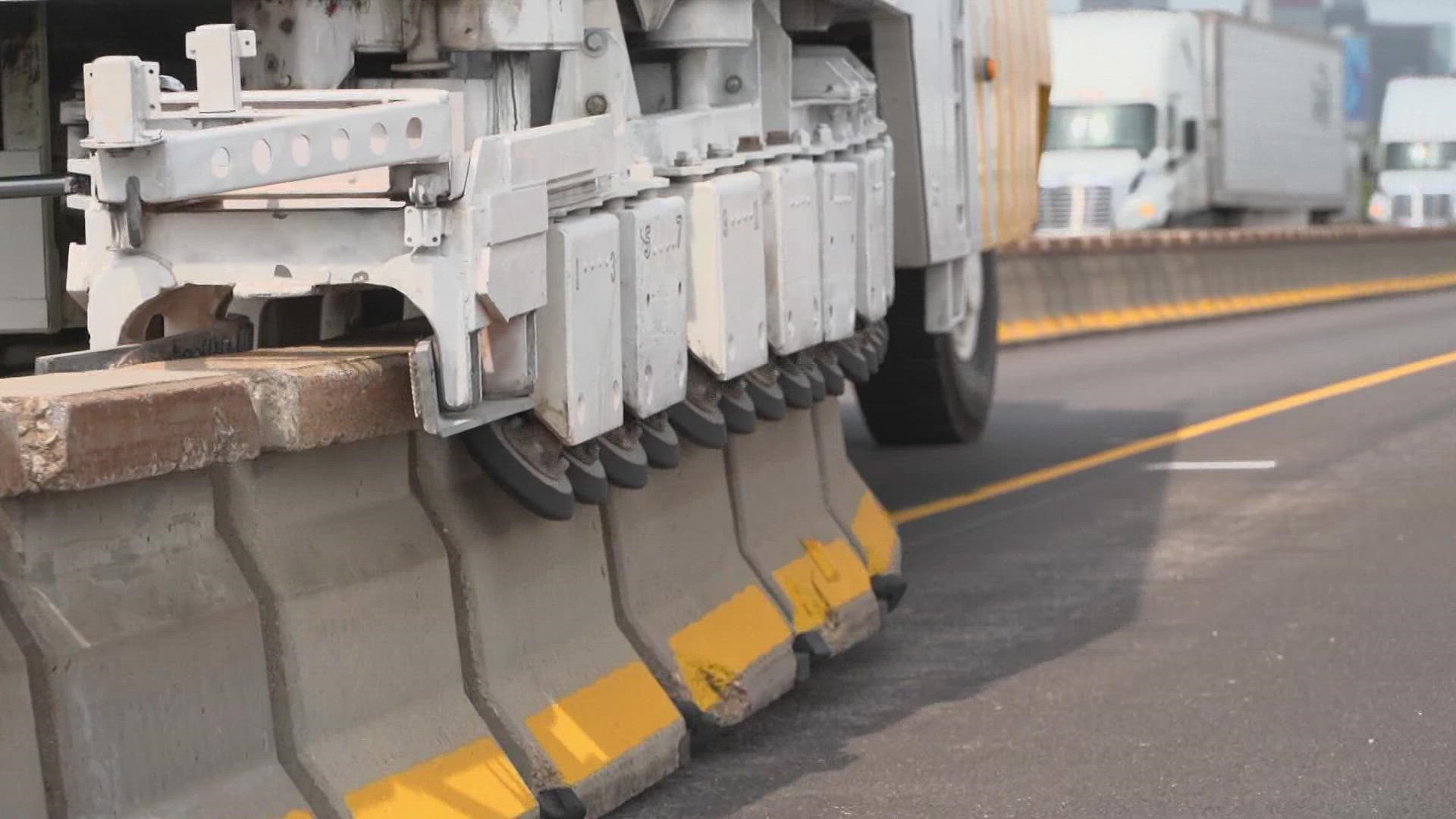DALLAS — If you're a driver stuck in traffic along that busy stretch of I-30 in Dallas, you know it can be a pain in the you-know-what when your commute is derailed by traffic.
“We get weird looks, birdies,” said machine operator James Washington. “Half the time, they think it's our fault when the road is shut down."
Most of those weird looks are because of the massive vehicle he operates daily.
"You think of it like a train, you put it on the track and try to follow,” James added.
Their top priority? Easing congestion along the busy corridor.
He’s part of a two-man team operating the zipper machine led by Calvin Windmann.
“We are borrowing a lane of traffic from the non-peak side and adding that lane to the peak direction to create an additional travel lane,” Windmann added, explaining how the zipper machine works every morning.
If you're new to North Texas and you've never seen anything like this, you're not alone.
“This managed lane was deployed in 1991, and it was the first road zipper managed lane in the United States,” said Laura Huizinga, Technical Sales Manager for Lindsay.
Twice a day, the zipper machine moves 8.5 miles of barrier to create an additional lane for those of you traveling in and out of Dallas five days a week.
It's a much cheaper option than adding additional lanes to the freeway.
“To rebuild this corridor would take a lot of time and an astronomical amount of money because you'd have to rebuild all the bridges and rebuild all of the roadway to provide an extra two lanes,” said Huizinga.
So, the next time you see James and team traveling at five miles per hour along I-30, he wants to remind you, “we’re not the problem.”
He says they are doing all they can to keep your morning and afternoon commutes right on track.

